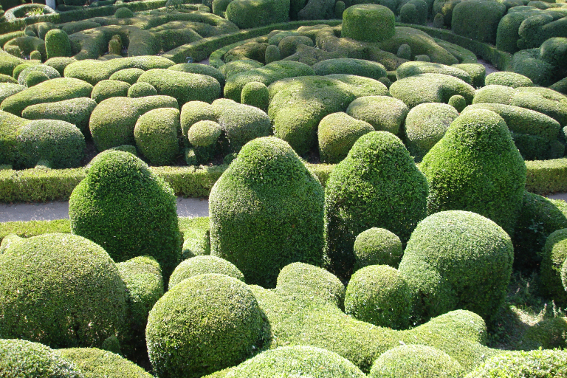_________________________________________
Primary bioresources…

Citrus Fruits. The orange consumption in Europe is around 20 kg per head and year. It is highest in France with more than 110 kg per head and year. (eurostat)
Note: Not all plants can be considered as a primary bioresource. Examples are plants from parks which have primarily a recreational function.
THE PRIMEVAL FOREST PLANTS ARE NOT BIORESOURCES EITHER!
Virgin primary bioresources are grown plants or animals mainly.To virgin primary bioresources count the whole harvested nonprocessed plant or the slaughtered animal, respectively. Processed primary bioresources are the removed, most value-added parts of the virgin primary bioresource needed to produce the “core product”. Example: spruce tree → stemwood → pulp for paper
Secondary bioresources…
may be generated during primary processing, in further industrial processing as by-products or residues, but also during maintenance of large greenareas. Typical regarding properties are following characteristics: they accrue genuine from virgin materials, they contain mainly a low amount of impurities, and they are produced in large quantities.

Fruit Residues. Around 25 % of the mass of an orange is orange peel. They contain interesting extractives and organic matter usable for various purposes. This mixed fruit residue from the foto is used for biogas generation.
2. As maintenance residues they are harvested on large green areas such as parks, lawns, sport places, and dikes as genuine fractions in significant amounts under controlled conditions in ample quality in terms of purity and freshness.
Tertiary bioresources…
are also parts from virgin materials, which were separated along the processing chain. But compared to secondary bioresources they are residues which occur rather in small amounts at the generation place and/or are not genuine. Also uncontrolled modifications, e.g. degradation during storage, may have taken place. They have generally a lower value than secondary bioresources.
1. In large-scale processing during harvesting, postharvesting, primary processing, and storage activities; during industrial processing, packaging, and distribution up to the retail sector.
Quaternary bioresources…
The value of bioresources
Primary bioresources from agriculture have traditionally special value for food & feed and from forestry for pulp & paper, particle boards and construction wood production. As „side effect“ they are from large value regarding their welfare and cultural function.
Biomass will be a scare resource in future, because the area for growing of primary bioresources is the limiting factor. The efficient utilization of secondary, tertiary and quaternary bioresources is therefore absolutly necessary.
Today waste & wastewater based secondary, tertiary and quaternary bioresources are often either not collected at all, disposed or inefficiently treated. This has to change! Manifold products are possible to make from the waste & wastewater based bioresources ranging e.g. from compost & biogas over mineral fertilizers & bioethanol & lactic acid up to specific chemicals and much more. Some are produced already in technical scale, but mostly the research & demonstration is actually pre-dominant. The design of multi-product cascades and biorefineries is from special interst for the future to use bioresources as complete as possible.
Further reading:
Körner (2015): Civilization Biorefineries: Efficient Utilization of Residue-Based Bioresources. In: Industrial Biorefineries and White Biotechnology. Chapter 7, http://dx.doi.org/10.1016/B978-0-444-63453-5.00009-4
;





